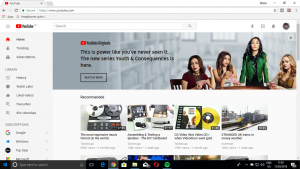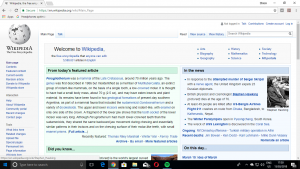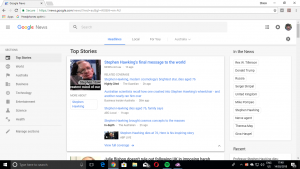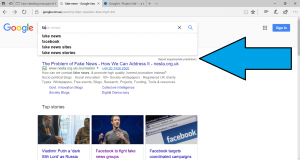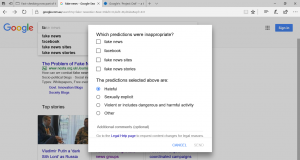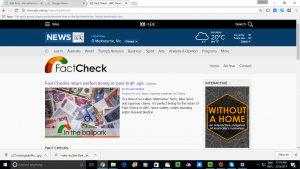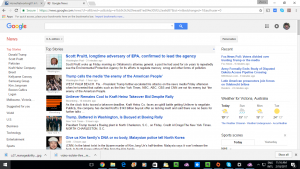Google and Facebook are starting to bring accountability to political advertising
Articles

Are you sure you are casting your vote without undue influence? (Courtesy of Australian Electoral Commission)
Facebook announces major changes to political ad policies | NBC News
Facebook reveals new political ad policies in wake of U.S. election | VentureBeat
What Can and Can’t You Do with Political Advertising on Facebook? | Spatially
Google Joins Facebook In Banning All Ads Related To Ireland’s Big Abortion Vote | Gizmodo
From the horse’s mouth
Update on Our Advertising Transparency and Authenticity Efforts {Press Release)
Supporting election integrity through greater advertising transparency (Blog Post)
My Comments
Over the last five months, a strong conversation has risen surrounding electioneering and political advertising on the online platforms including social media and online advertising.
The trends concerning this activity is that the political advertising spend is moving away from traditional print and broadcast media towards online media as we make more use of highly-portable computing devices to consume our information and entertainment.
Issues that have also been raised include the use of fake comments and pre-programmed auto-responding “bots” as part of political campaigns. This is alongside the rise of very divisive political campaigns during the 2016 Brexit and US Presidential election cycles that played on racial and religious prejudices. There is also the fact that nation states with improper intentions are seeing the idea of poisoning the information flow as another weapon in their cyber-warfare arsenal.
It has also been facilitated through the use of highly-focused data-driven campaign-targeting techniques based on factors like race, gender, location and interests, with this practice being highlighted in the Cambridge Analytica saga that caught up Facebook and Twitter.
As well, the online advertising and social media platforms have made it easy to create and maintain an advertising or editorial campaign that transcends jurisdictional borders. This is compared to traditional media that would be dependent on having the advertising material pass muster with the media outlet’s advertising staff in the outlet’s market before it hits the presses or the airwaves.
This issue will become more real with the use of addressable TV advertising which is currently practised with some advertising-based video-on-demand services and some cable-TV platforms but will become the norm with traditional linear TV being delivered through through the increasing use of interactive-TV platforms.
This technology would facilitate “hyper-targeting” of political campaigns such as municipal-level or postcode/ZIP-code targeting yet maintain the same “air of legitimacy” that the traditional TV experience provides, making it feasible to destabilise elections and civil discourse on the local-government level.
Election-oversight authorities in the various jurisdictions like the Australian Electoral Commission or the UK’s Electoral Commission have been doing battle with the online trend because most of the legislation and regulation surrounding political and election activities has been “set in stone” before the rise of the Internet. For example, in most jurisdictions, you will see or hear a disclosure tag after a political advertisement stating which organisation or individual was behind that ad. Or there will be financial reporting and auditing requirements for the election campaigns that take place before the polls.
Facebook and Google are having to face these realities through the use of updated advertising-platform policies which govern political advertising, But Facebook applies this to candidate-based campaigns and issues-based campaigns while Google applies this to candidate-based campaigns only at the time of writing.
Firstly there is a prohibition on political advertising from entities foreign to the jurisdiction that the ad is targeted for. This is in line with legislation and regulation implemented by most jurisdictions proscribing foreign donations to political campaigns affecting that jurisdiction.
This is augmented through a requirement for political advertisers to furnish proof of identity and residence in the targeted jurisdiction. In the case of Facebook, they apply this policy to pages and profiles with very large followings as well as ads. Similarly, they implement a postcard-based proof-of-residence procedure where they send a postcard by snail mail to the user’s US-based home / business address to very presence in the USA.
Facebook augments this requirement by using artificial-intelligence to flag if an ad is political or not, so they can make sure that the advertiser is complying with the requirements for political advertising on this platform.
Like with traditional media, political ads on both these platforms will be required to have a disclosure tag. But Facebook goes further by making this a hyperlink that end-users can click on to see details like verification documents, why the viewer saw the ad along with a link to the sponsoring organisation’s Facebook Page. This has more utility than the slide shown at the end of a TV or online ad, the voice-announcement at the end of a radio ad or small text at the bottom of a print-media ad or billboard poster which most of these tags represent.
Both of the Internet titans will also make sure details about these campaigns are available and transparent to end-users so they know what is going on. For example, Facebook requires advertisers to maintain a Facebook Page before they buy advertising on any of the Facebook-owned platforms. This will have a “View Ads” tab which includes details about targeting of each current and prior campaign with a four-year archive allowance.
Google has taken things further by making sure that political organisations, politicians, the media and journalists are aware of the resources they have to assure data security for their campaigns and other efforts. Here, they have prepared a “Protect Your Election” Webpage that highlights the resources that they provide that are relevant for each kind of player in a political campaign. This includes Project Shield to protect Websites against distributed denial-of-service attacks, along with enhanced security measures available to operators of Google Accounts associated with critical data.
Both companies have been implementing these procedures for North America with Facebook trying them out in Canada then “cementing” them in to the USA before the midterm Congress election cycle there. Both companies then took action to suspend political ads from foreign entities outside Ireland during the election cycle for the Eighth Amendment abortion referendum taking place in that country. Here, they have applied the prohibition until the close of polls on May 25 2018. Let’s not forget that these standards will be gradually rolled out in to other jurisdictions over time.
But what I would like to see is for companies who run online advertising and social-media activity to liaise strongly with election-oversight officials in the various jurisdictions especially if it affects a currently-running poll or one that is to take place in the near future. This is in order to advise these officials of any irregularities that are taking place with political advertising on their online platforms or for the officials to notify them about issues or threats that can manifest through the advertising process.

